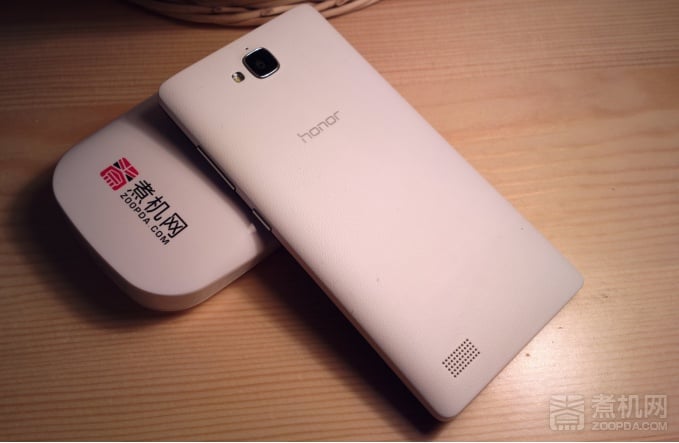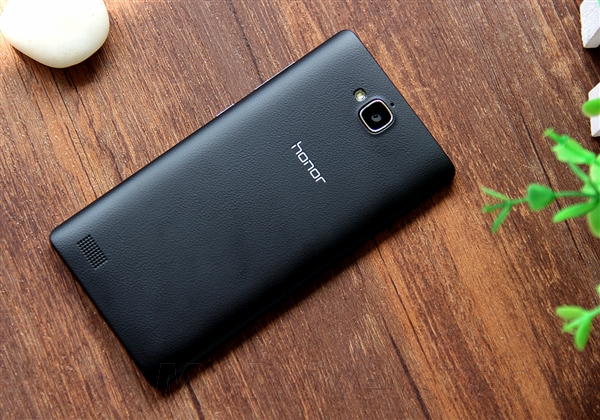Huawei has been fighting for two years in the mobile market and has gradually found the opportunities to honor its flagship brand campaign by providing users with electricity cost efficiency in the market. Hauwei’s Honor 3C launched in late 2013 at a low price. It relied on more of its sophisticated products to win, forcing competitors to reduce the official price of their products.
The Honor 3C version was ranked highly and was in the forefront of its sales, surpassing competitors and achieved very good sales.
With the popularity of the Honor 3C launch, will the 4G version of this product do as well as its predecessor? We experience the product first hand and analyze its thoroughly.
Appearance and Workmanship
The Honor 3C and the 4G version have the same basic shape. This smartphone has a rounded rectangle appearance, an all bonded glass screen, relatively narrow borders and a seamless front.
In comparison to the Honor version of 3C, the 4G version has had its back texture processing been quite improved with a leather texture. This smartphone has been improved quite a bit with changes to how the smartphone feels, increasing the sense of appearance grade (many use the hard plastic automotive interior lines to enhance the sense of quality) as well as the increased friction when holding the phone to prevent the phone from being dropped.
However, this texture is also easy to get dirty and smudged. Users will often find that the will need to constantly be wiping their phone to keep it cleaner looking, otherwise it will be difficult to see. This feature has both some great advantages and some horrible disadvantages.
On the back cover, the Honor 3C and the 4G version have not made any big changes. They both have a simple curved handle, but the addition of leather texture makes the phone feel good and is definitely worthy of some praise.
One of the differences between the Honor 3C version and the 4G card is the necessary change to the battery. For aesthetic appearance, it has been designed to not open the back cover with the slot, but through the USB port directly. This design choice is both beautiful and somewhat troubling for the user.
Overall, the Honor 3C and 4G versions look are different and a lot of work has been done over the previous generation. Although the appearance is nothing new, considering the higher price, the changes are satisfactory.
Hardware and Performance
Compared to the Honor 3C version, the biggest change between the Honor 3C and the 4G version is the decision to replace the processor from MTK 6582 to Huawei Hass Kirin910. Kirin910 integrated into the 4G baseband using ARM A9 cores. It speeds up to 1.6Ghz, which basically reaches the Samsung 4412 level. The GPU is also the leading factor and helps with the overall performance. The practical experience is very good.
Here we must emphasize that the experience of the mobile phones is to mainly see the single-core performance, the memory bandwidth and the GPU performance. The Kirin910 quad-core A9 is much better than the eight-core A7 MT6592. The memory bandwidth is also far beyond what is expected and the Kirin910 experience and the Qualcomm Snapdragon 600 are quite close.
We also measured the CPU performance, to see if it has a smoother and theoretical improvement. The Kirin910 performance was pretty good and above average.
Versus the Honor 3C version, the 4G version has a 5-inch screen and also has a 720P screen. This screen resolution is not very high. The PPI is less than 300, slightly less than the required retina screen. When looking up close you can see that the phone screen has a grainy look, but overall there are no normal distance problems.
In addition to the weaker PPI, the screen quality is actually quite good. Using the grayscale test, you can more clearly see the 256-level grayscale that this phone supports. This is something that even high-priced phones can not do typically. It helps to ensure the readability of the phone’s screen, even with the highest brightness from the sun. There is no obvious color cast, but the display quality is relatively good.
In contrast to the Honor 3C version, the 4G version pictures have improved. The 8,000,000 pixels is not a problem, but the Honor 3C and 4G both use a CMOS which is 1/4 inch. Because the sensitive area is quite small, the noise is quiet. The 4G version made more serious advancements to noise reduction which has had a significant impact on its quality results.
Software and Design
Huawei has creating its own Emotion UI. The initial UI was terrible, but after several years of being in development, the current 2.3 version has basically been perfected. This is a path that most mobile phone manufacturers do when creating their user interface.
There are basic similarities between the versions with various interactive experiences that are made up of animated transitions. The design is quite well done. The biggest gap between the versions is the difference in the art and the aesthetic levels.
In the standby interface, Huawei have made improvements. There has been a commitment to the attention of commonly used functions that have been integrated into the standby interface. They are very easy to use and is somewhat similar to other phones in the market.
In the main interface, Huawei have redesigned the top bar design with a transparent gradient and removed the ugly black box that used to appear.
In the telephone interface, the number keys have had shading added to them, but did not do any stereo and lighting design changes.
The Huawei folders interface is, by design, in a gallery format which has been changed to help incorporate the Emotion UI 2.3.
Huawei was also very attentive to the need for safe driving. This increased functionality with voice command operations makes sure that the user keeps their hands on the wheel and improves the quality of the user’s experience.
The settings menu can be customized now with the addition of shortcuts.
Overall, the Emotion UI 2.3 has done a great job with improvements for commonly used functionality. The design of the layout has been well thought out and is very flexible and fluid. In addition to aesthetic issues and everyone’s different tastes, the Emotion UI 2.3 has no severe problems. The UI has matured and is much easier to user.
Summary
Theoretically, versus the Honor 3C version, the 4G version is a more perfected version. All aspects of the configuration have been very well balanced, the Kirin910 has excellent performance, the workmanship is quite worth the increased price and the software is more mature.
The 4G version has a problem with its 1/4 inch CMOS and software optimization did not do a good job. Finally, the picture quality is not satisfactory. The ability of Huawei’s software does have good P7 picture quality some of the time.
In comparison to the Honor 3C version, the 4G version has appropriate elements kept in mind with the point UI improvements and the Huawei’s hardware has the ability to make excellent and good quality photographs. Perhaps Huawei will buy Ascend P7 and actually enter the electricity provider market. With this capabilities they would be able to enter the market without disturbing the different phones they provide.


















